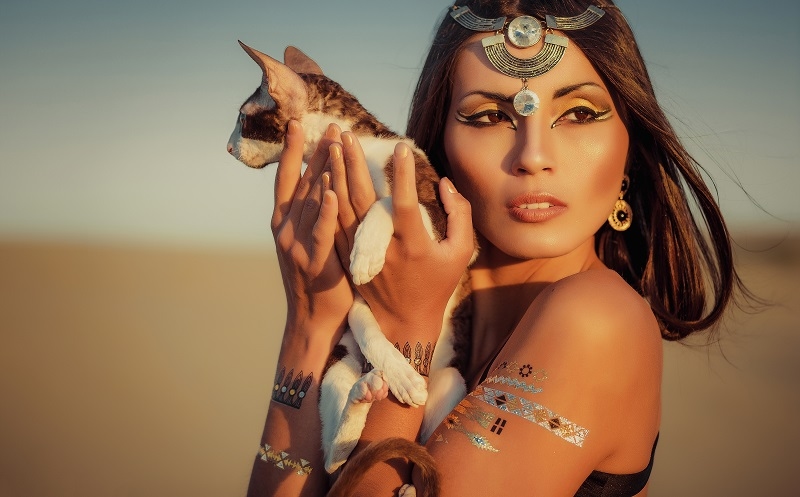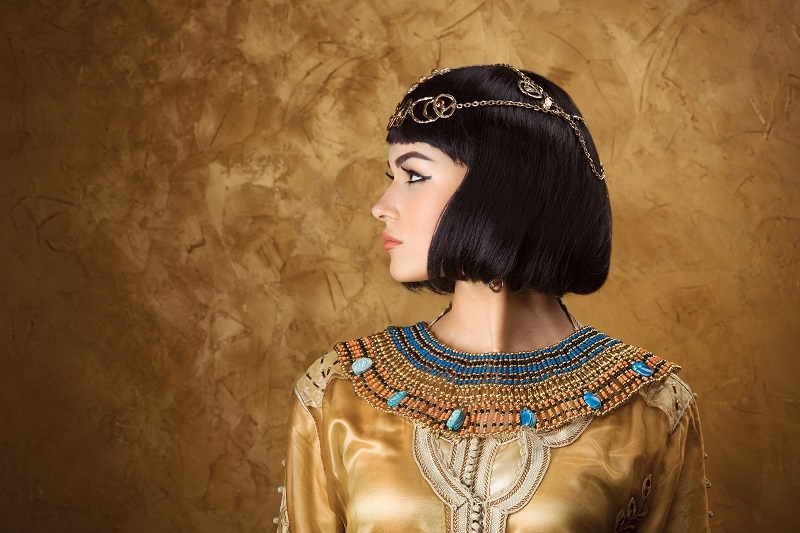
The ancient civilization of Egypt is popularly associated with elaborate practices, beliefs _ and (religious) rituals regarding death and the afterlife. Egyptian funeral hairstyles were just one of the many customs of the time. They were also significant in the rite of grooming and in the cultural and religious beliefs that permeated Egyptian society.
Hairstyles in ancient Egypt were not merely a matter of fashion; they were symbolic, signaling a person’s status, age, gender, and, importantly, their association with death and mourning. This blog contains insight and analysis of Egyptian funeral hairstyles' culture, practice, symbolism, and tradition.
During ritual grooming, hairstyles were crafted to reflect a person’s societal role, personal beliefs, and the importance of the event being celebrated. This became stronger during funerals. Death being a continuation of life in another world, the Egyptians took their funeral preparations very seriously, including the hair style — every detail had to be loaded with the appropriate symbolic significance.
Also Read: Moustaches in Ancient Egypt: Power, Identity & Symbolism
Egyptian funeral hairstyles also blended religious symbols and ancient spiritual beliefs. Hair was thought to embody life force and vitality, making it a powerful medium of redefinition from which the living could access both the dead and the divine. The mourning by which hair became a dominant symbolic element in this regard was that of the common shaving or cutting of hair.
Traditionally, mourners shaved their heads or cut their hair short, both as a sign of mourning and a token of grief and loss. This was more than a cultural practice; it was a way to symbolize the shedding of worldly attachments and, more generally, the transition from life to death. By cutting their hair, mourners showed humility and submission to the natural order of life and death.
This grooming process was also intended to spiritually cleanse the person, allowing them to assist with the funerary rituals and ensuring they were not out of balance with the deceased's passage.
Ritual grooming was an important part of Egyptian funerals for both the dead and the living mourners. The dead's hair was styled with the same level of attention, reflecting their social status in life and making them presentable for entering the afterlife. The dead's bodies were often treated with oils and perfumes. Hair and other corporeal attributes of the dead were viewed as critical ingredients in keeping the person’s identity intact in the afterlife.
Women usually did funeral rites for death to groom the dead. Females closest to the dead were frequently caretakers of the body, and their own hair was changed during the mourning.
For instance, they may wear their hair in unkempt styles or cover it altogether as a sign of grief and to indicate that life’s continuity has been interrupted by death. Such practices spotlighted the relationship between hair in mourning and the wider spiritual and emotional context of death in ancient Egyptian belief systems.
While shaving and haircutting before funerals were routine in Egypt, more elaborate styles were employed as acts of mourning and respect for the dead. Hair was often braided or tressed into elaborate wigs, signaling various stages of grief for some mourners, especially women. These ceremonial Egyptian hairstyles were created within the spirit of this era, which emphasized the cycle of life, death, and rebirth.
Wigs, especially, played an important role in ancient Egypt. Not only did they serve as status symbols when one was alive, but they also had particular significance to death rituals. Wigs — made in some cases from human hair and wool — were sometimes worn by mourners as part of their ceremonial attire, which could be styled according to either the style of the deceased’s hair or a particular mourning style.
Wearing wigs is linked to the idea of symbolic hair, which serves as a crossing point between the living and the dead, ensuring the memory and presence of the dead will be honored with chivalry.

Egyptian funeral hairstyles are a testament to the complicated relationship between beauty and death. The hairstyles employed during these rituals were not simply aesthetic preferences but integral to Egyptian society's cultural and religious fabric. From the unsubtle step of shaving one’s head to the complex layering of wigs and braids, each element of a mourning hairstyle has a profound connotative meaning within theology, demonstrating how the ancient Egyptians regarded life, death, and the afterlife.
This is also brought to life by the insight it gives them into hair as a means for both personal will and spiritual communion. In life, as in death, hair reflects a person's inner state, and styling a deceased person's hair is a way of ensuring a smooth transition to the next world.
When it came to preparing the deceased for burial, great care was taken around all aspects of the body, including the hair, which reflected its sacred nature as part of a person’s identity in the Egyptian worldview.
One especially significant function of hair in mourning is its use to connect the living and dead. Ancient Egypt was all about the afterlife, and funeral practices were not merely for the dead but also helped living mourners to process their sorrow and perhaps even look forward to rekindling with their loved ones beyond the grave. Egyptian funeral hairstyles, therefore, served as an emblem of this transformation, helping to span the divide between the physical and metaphysical worlds.
Of course, their hair was often arranged to reflect a truer version of themselves, as healthy, whole, and vibrant as the person alive. This practice was employed to ensure that they were honored and revered in the afterlife.
Mourners, on the other hand, would sometimes change their hair—shaving it off, covering it, or wearing more demure styles—to reflect that they were in mourning. These grooming rituals expressed the divide between the living and the dead, with the hair as a physical signifier of that relationship in the death that had happened.
Also Suggested: Egyptian Hairstyles for Men: Trends & Traditions in History
Although the particular Egyptian funeral hairstyles we talked about no longer exist nowadays, the ideas behind them can still be seen in modern cultural practices related to death and mourning day. In many cultures today, hair remains a potent symbol of grief and remembrance.
From cutting hair to covering the head to styling it in a certain way, the symbolic presence of hair in mourning remains strong. It reminds us of the fundamental human impulse to use our physical forms to process and honor the loss.
The ritual grooming and symbolic use of hair by ancient Egyptians in their funerary practices remind us of the spiritual significance of how we choose to represent ourselves. The deceased flourished within the context of their reverence. It appeared in their burial rites and echoed in how they formed their hair in deference, arguably shaping how the living experience death and grief today.
This rich tradition of hair has enduring roots in ancient Egyptian culture. It reflects the beliefs of the time and also evolved with the heavenly cultures introduced by the Greeks and Romans. From mourning customs, such as shaving one’s head, to constructing wigs, braids, and dreadlocks, hairstyles were an important aspect of ancient Egyptian funeral rituals, both personal and spiritual.
These cultural practices provided a way for the Egyptians to grieve and honor the deceased, prepare for the afterlife, and align the living with the sacred and the deceased with the sacred. This investigation of the ritual grooming practices surrounding death in ancient Egypt illustrated the symbolic use of hair as a necessary part of the mourning process. It shows the human imperative to embrace the spiritual-mythical aspects of humanization around our bodies, souls, and identities in our death experience.
This content was created by AI